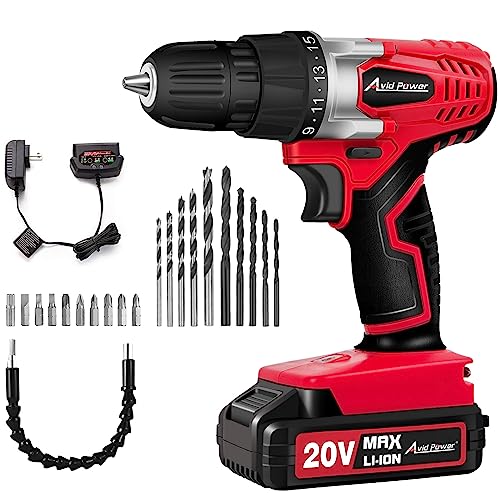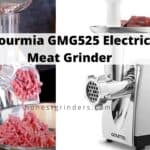Angle grinders and drills are two very different tools. An angle grinder is a handheld power tool that is used for grinding, polishing, and cutting materials. A drill is a tool that is used for drilling holes into materials.
While an angle grinder can be used to drill holes, it is not the ideal tool for the job and should only be used as a last resort.
- Attach the metal grinding disc to the drill
- Plug in the drill and turn it on to a high-speed setting
- Hold the drill against the metal surface you want to grind away
- Apply pressure and start moving the drill in a circular motion over the surface
- As you move the drill, keep a close eye on your work area so you don’t accidentally grind into something you don’t want to damage
- Once you’re finished grinding, turn off the drill and unplug it from the power source before removing the disc attachment
You May Like
Convert drill machine into angle grinder | DIY how to convert drill machine into the angle grinder
Can I Sand With a Drill?
Sure, you can sand with a drill! Using a drill to sand down rough surfaces is a common practice in many woodworking and carpentry projects. It’s fast, efficient, and gets the job done quickly.
However, there are a few things you need to keep in mind when using a drill for sanding purposes. First of all, make sure you’re using the right type of bit. For most sanding projects, you’ll want to use an abrasive grinding bit.
These bits have a rough surface that will quickly remove material from your workpiece. Be sure to select a bit that is compatible with your drill; some bits are only designed for use with specific types of drills. Next, consider the speed at which you run your drill.
When sanding, it’s important to go slowly so that you don’t damage or remove too much material from your workpiece. Start at a low speed and gradually increase the speed as needed; this will help you get an even finish without overdoing it. Finally, be sure to wear eye protection while working; flying debris can be dangerous!
Can You Grind Metal With a Drill?
If you’re looking to grind metal with a drill, there are a few things you need to keep in mind. First, you need to make sure that the drill bit is made of high-speed steel or carbide. Second, the bit needs to be sharpened regularly.
Third, you need to use lubrication (coolant) when grinding metal with a drill. Fourth, it’s important to use the correct speed and pressure when grinding. If you follow these tips, you should be able to grind metal with a drill without any problems.
What Can I Use My Drill For?
Your drill is a versatile tool that can be used for a variety of tasks around the house. Here are just a few examples of what you can use your drill for:
-Drilling holes in walls: This is perhaps the most common use for drills.
Whether you’re hanging pictures or mounting shelves, your drill will make quick work of creating pilot holes. Just be sure to use the correct bit size for the screws or anchors you’re using.
-Driving screws: In addition to drilling holes, your drill can also be used to drive screws.
This is especially handy when working with larger screws or screws that are difficult to start by hand. Simply insert the screw into the chuck, tighten it down, and start driving!
-Removing old nails: If you need to remove an old nail from a piece of wood, your drill can come in handy.
Simply grab an appropriately sized drill bit and bore a hole through the center of the nail head. The nail should then come out easily.
-Sanding and polishing: You can attach sanding or polishing pads to your drill to quickly buff out small areas.
This is especially useful when working on projects like furniture refinishing where detailed work is required.
What Does a Drill Grinder Do?
A drill grinder is a machine that is used to grind the edges of a drill bit. The main purpose of using a drill grinder is to keep the drill bit sharp and to extend its life. There are two types of drill grinders: bench-top and hand-held.
Bench-top models are typically more expensive and offer more features than hand-held models.
Angle Grinder Drill Bit
An angle grinder is a powerful handheld tool that can be used for a variety of projects, including grinding, cutting, and polishing. One accessory that can be very useful is an angle grinder drill bit. This type of drill bit is designed to work with an angle grinder and can make quick work of drilling holes in various materials.
There are a few things to keep in mind when using an angle grinder drill bit. First, always use eye protection and gloves when working with power tools. Second, the material you’re drilling into will determine the type of drill bit you need to use.
For example, if you’re drilling into concrete, you’ll need a different type of drill bit than if you’re drilling into wood. Third, take your time, and don’t force the drill bit – let it do the work. If you have a project that requires some quick drilling, an angle grinder drill bit can be a great option.
Just be sure to follow the proper safety precautions and select the right type of drill bit for your material!
Drill Arbor Adapter
If you have a drill and an arbor, then you have the makings of a powerful and versatile tool. With a drill arbor adapter, you can use your drill to power all sorts of different tools.
A drill arbor adapter is a simple device that attaches to the end of your drill’s chuck.
It has a threaded hole in the center that accepts various types of bits and attachments. This gives you the ability to use your drill for tasks beyond just drilling holes.
With an adapter, you can use your drill to power saws, buffers, sanders, and more.
You can even get adapters that allow you to use impact sockets with your drill – giving you even more versatility.
There are all sorts of different adapters available on the market – so finding one that fits your needs should be easy. And once you have one attached to your drill, there’s no limit to what you can do!
Metal Grinder Attachment for Drill
A metal grinder attachment for a drill can come in handy in many situations. If you need to remove rust from metal, sharpen tools, or cut through tough materials, this attachment can make the job much easier. Here are some things to keep in mind when using a metal grinder attachment on your drill.
First, be sure to wear proper safety gear including gloves and eye protection. This will help protect you from flying debris and sparks. Second, select the correct grinding wheel for the material you’re working with.
There are different wheels available for different metals and applications. Third, start the drill at a low speed and increase the speed gradually as needed. Applying too much pressure or moving too fast can cause damage to the material or wheel.
Finally, be sure to clean up any debris after finishing your project. With these tips in mind, you’ll be able to tackle any project with ease using a metal grinder attachment on your drill!
Can You Sand With a Drill
We all know that sanding by hand can be a tedious and time-consuming task. But what if you could use your drill to do the sanding for yourself? Can you sand with a drill?
The answer is yes! You can sand with a drill, and it can be quite easy and quick. All you need is the right attachment – a sandpaper pad or a grinding wheel – and you’re good to go.
Here’s a step-by-step guide on how to sand with a drill:
1. Choose the right attachment. If you’re going to be doing any kind of serious sanding, then you’ll need an attachment that can get the job done quickly and efficiently.
A sandpaper pad will work fine for lighter jobs, but for tougher tasks, you may want to opt for a grinding wheel instead. Either way, make sure that your attachment is firmly secured onto the end of your drill before proceeding.
2. Put on some safety gear. Whenever you’re using power tools, it’s important to take proper safety precautions. So before you start drilling away, be sure to put on some goggles and ear protection.
3 . Start slow and steady. When first starting, it’s important not to apply too much pressure as you don’t want to damage whatever surface you’re working on. Instead, start at a low speed and gradually increase the speed as needed.
The key is to find a balance between speed and pressure so that the material is evenly removed without causing any damage.
Drill Machine
A drilling machine is a tool that is used to create holes in various materials such as wood, metal, or stone. It consists of a rotating drill bit that is held in place by a chuck. The user applies pressure to the drill bit with their hand and rotates it to create the hole.
There are many different types of drill machines available on the market today. Some are designed for specific tasks, while others are more versatile and can be used for a variety of applications. Drill machines can be powered by electricity, batteries, or compressed air.
The most common type of drill machine is the portable electric drill which is typically used for household projects. When purchasing a drill machine, it is important to consider the intended use and choose one that is best suited for the task at hand. For example, if you need to drill large holes then you will need a more powerful machine than what would be required for smaller tasks like drilling pilot holes.
There are also specialized machines available for certain applications such as masonry drills that are designed specifically for drilling into brick or concrete walls.
Electric Grinder Tool
An electric grinder is a powerful tool that uses an abrasive wheel to cut, grind, or polish metal. The first electric grinder was invented in 1885 by A.J. DeArmond and has been an essential part of the manufacturing process ever since. Today, there are many different types of electric grinders on the market for a variety of applications.
The most common type of electric grinder is the angle grinder, which is used for grinding down metal or concrete surfaces. Angle grinders come in a variety of sizes and can be fitted with several different attachments depending on the application. For example, some angle grinders have wire brushes attached to them which are used for stripping paint or rust off of surfaces.
Another type of electric grinder is the die grinder, which is used for grinding away small bits of material (usually less than 1/8 inch). Die grinders typically have cylindrical grinding heads that rotate at high speeds (20,000 to 30,000 RPM). These tools are often used for precision work such as shaping metal components or smoothing out rough edges.
Electric grinders are also commonly used in woodworking applications. There are several different types of woodworking grinders available including benchtop models and handheld models. Benchtop models usually have larger motors and more features than handheld models but they are not as portable.
Handheld models are typically smaller and lighter weight but they don’t have as much power as benchtop models. No matter what type of electric grinder you need, there’s sure to be one on the market that will suit your needs perfectly!
Metal Grinder Tool
If you’re looking for a durable, efficient metal grinder tool, you’ve come to the right place. In this blog post, we’ll provide detailed information about metal grinders, including their benefits and features. We’ll also give you some tips on how to choose the best metal grinder tool for your needs.
Metal grinders are tools that are used to grind down metal objects into smaller pieces. They can be handheld or bench-mounted, and they come in a variety of sizes and shapes. Metal grinders are often used in welding and fabrication shops, as well as in auto body repair shops.
There are many benefits to using a metal grinder tool. First of all, they’re very efficient at grinding down metal objects quickly and easily. They also create less dust than other types of grinders (such as abrasive wheels), which means that they’re better for your health and the environment.
Additionally, most metal grinders come with safety features such as guards and spark arrestors, which help to protect you from injuries while using the tool. When choosing a metal grinder tool, it’s important to consider the type of work you’ll be doing with it. For example, if you’re going to be working with thin sheets of metal, you’ll need a different kind of grinder than if you’re working with thicker materials.
Additionally, think about the power source for your grinder – will you be using an electrical outlet or running it off of batteries? Finally, make sure to choose a product from a reputable brand so that you know it will be durable and long-lasting.
Angle Grinder Uses
An angle grinder is a powerful tool that can be used for a variety of different projects. Here are some of the most common uses for an angle grinder:
1. Cutting tile, stone, or concrete- An angle grinder with a diamond blade makes short work of cutting through hard materials.
2. Grinding metal- A grinding disc on an angle grinder is great for removing rust or paint from metal surfaces.
3. Sharpening tools- A sharpening stone attachment can turn your angle grinder into a tool sharpener.
4. Polishing- A polishing pad attached to an angle grinder can be used to polish stone or metal surfaces.
Conclusion
It is possible to use a drill as an angle grinder, but it is not recommended. Drills are designed to spin in one direction, while angle grinders spin in both directions. This can cause the drill bit to break and fly off.
In addition, angle grinders have safety features that drills do not have, such as a guard to protect your hands.

Hi, this is Cynthia A. Rose. Welcome to my Grinder related blog. Usually, I am busy with my kitchen and cooking all day. My main desire is to create a new recipe every day. But I have to use new tools every day to create new recipes. In this blog, I will share you how to use kitchen tools properly. I will not just share cooking related equipment, I will try to review all kinds of grinders like angle grinder among you. I hope my 12 years of experience will come in handy. Thanks!








